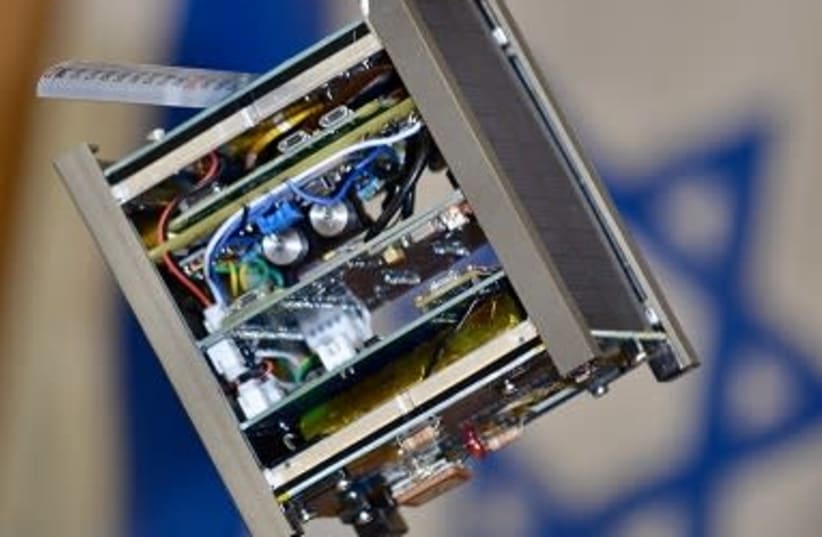A team of students at the KC&G lab in Ariel University are only days away from seeing the school's first nanosatellite launched into orbit around Earth.
The nanosatellite, SATLLA-1. was launched into space a month ago on the unmanned cargo shuttle Signus NG-14 en route to the International Space Station.
SATLLA-1 is the first of a series of three nanosatellites which are planned to be launched into space to test the nanosatellites' ability to transmit images optically, without the need for radio broadcasting.
SATLLA-1's mission, which starts on Thursday, is to test out its star-tracking program, which helps the satellite position itself by using imaging from the surrounding stars.
Broadcasting, the current most commonly used method of data transmission from space, is very expensive and requires a license from the Communications Ministry, the allocation of a frequency and the use of large satellite dishes.
Radio frequencies are limited to a certain number. Therefore, their allocation requires considerable waiting times. In contrast, data transmission by optical means does not require a license, enables the transmission of larger amounts of information and does so faster than radio waves.
However, there are also disadvantages to laser optic communication. It requires a sky completely devoid of clouds for the systems to properly "see" each other and transmit the information. Beyond that, the satellites also need to aim themselves with a precision to one tenth of a degree from the target.
Since 2016, Prof. Boaz Ben Moshe has guided the students through the process of building the satellite, focusing on space exploration, navigation systems, autonomous robotics and cybernetics.
The development team is based on undergraduate, master's and doctoral students from the Department of Computer Science and the Faculty of Engineering at Ariel University.
